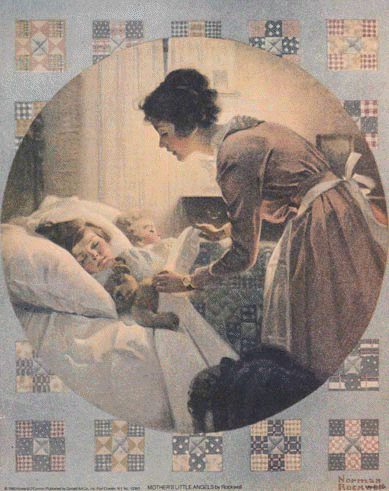
Midwives

Information comes from Treasured Tidbits of Time Volume I by Jens Patrick Wilde
The first midwives of the Bear Lake area were of three divisions, (1) natural midwives (2) called (3) trained. Those considered natural midwives were the ones who had begun helping through their labor and practical experience had become skilled in the process. A "called" midwife was chosen by her bishop and set apart for that position. She continued to served in this capacity until released by her bishop. Her duties were specific; to help women in labor, to prepare the dead for burial and to administer to the sick and afflicted.
It was not much before 1880 that the "trained" midwife became prominent. By then the LDS Church had developed a program in Salt Lake City where women called to serve as midwives were given six months training by top qualified doctors. Those who showed special aptitudes for medicine were given additional training and learned pharmaceutical skills and how to prepare medicines.
By the end of the 1880s over 500 women were trained in the field and returned to their communities. Dr. Ellis R Shipp offered the obstetrics training and Dr. Peter Kohler the pharmaceutical education.
Two of the earliest midwives in the Paris community were Emiline Grove Rich and Margaret Louttit Innes. Emiline learned early that she loved working with the sick and afflicted and as a result became quite well trained through experience. Her skills were numerous and from the very beginning she was a midwife, druggist, physician, nurse and veterinarian. Her knowledge of folk medicine was well accepted and she knew the healing qualities of many plants. She also obtained forceps and dental equipment and served as the first dentist. She continued her practice until she was 75.
Margaret Louttit Innes was a master at making medicines especially smooth and palatable pills which she mixed from finely ground flour, the medicine, sugar and a variety of colorings. She also had control of the alcoholic beverages used for medicine.
Catherine Nelson was an early midwife of Bloomington. Catherine was a mother of only six days when she was called upon to assist in delivering another child some distance from her home. She rose from her bed, mounted a horse and with her babe in arms, galloped off to assist.
Elizabeth "Granny" Long, the wife of Emanuel Long was another midwife of Bloomington. She became adept at designing the interior of caskets with her husband fitted.
Sarah Heald served jointly as a midwife and as Bloomington Relief Society President for 15 years.
Mary Haddock Jackson was a professionally trained English midwife who settled in Bloomington. She served for 10 years as one of the natural doctors prior to her marriage to Billy Roberts.
In Montpelier Sara Thompson Phelps, Elizabeth Lucretia Thorn Bingham and Harriet Wight Phelps Holmes served for over 40 years. Sara Phelps delivered over 580 babies without a single death. To Harriet Holmes goes the credit of establishing the first crude hospital in Montpelier. She maintained extra beds in her home for the sick and was also an early post mistress.
Perhaps the busiest of all midwives on the east side of the valley was Frances Elizabeth Bridges who was a called midwife. She also kept some of the best records on the births she handled. She recorded the size, height, name and sex and if there were any distinguishing marks they were also listed. After receiving her call in 1873 Frances delivered 1118 babies. Her normal charge for her service, which usually included 10 days assistance and checking on the mother and child was $5.00. Often this was paid in produce, animals or not at all.
At Dingle, Dr. Jane Ann Fowler Sparks served for most of the medical matters for many years. She was called to the position by President William Budge and sent to Salt Lake where she received the entire program of training. In addition to handling medical problems of greater and lesser nature she also delivered over 500 babies. Dr. C A Hoover, pioneer doctor of Montpelier, said of Mrs. Sparks, "he preferred her above any other nurse he had ever known". When he became supervisor of the Institution of the Insane at Blackfoot, he offered her the head matron position at a salary many times what she would ever receive at Dingle. She declined and served the people of Dingle for many more years. She died there in 1921.
At Georgetown Dr. Alice Jean Tippetts, was another young woman who had shown much aptitude for medicine. She was given the best possible training. According to early church records she was called to her position and served for 35 years. Her last official act was the delivery of her own great grandchild. After that Georgetown was served by Sarah Fretwell.
Ann Molten Lewis and Mary Edwards Hymas served in Liberty. Ann Lewis had received professional training in England. Her first delivery was her own grandson, the first born of John and Mary Ann Hymas. She once made a trip 13 miles from Liberty to Nounan, pulled much of the way in a small toboggan by the husband of the expectant mother. In some areas the snow was over five feet deep. Her fee for eight days of service and the trip was $2.50.
In Ovid Martha Sorensen Carlsen served for 30 years. In St Charles Ann Collett Oakey served a similar time. At Geneva, Ertnia Blechert traveled up and down the Thomas Fork Valley and served for 30 years.